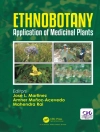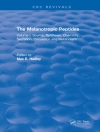Combining the principles of Traditional Chinese Medicine (TCM) with Western medical acupuncture, this eagerly awaited book and CD-ROM brings the entire field of acupuncture to a new professional standard. The authors, leading experts from diverse disciplines, systematically guide you through the channels, point locations and trigger points in the body, from head to toe. Each acupuncture point is shown in vivo and then explained in detail, using illustrations that show its exact anatomical location and characteristics.
In addition, you will benefit from state-of-the-art information never published before, including: a universal point localization system based on anatomic principles; a comprehensive discussion of potential contraindications and side effects of acupuncture; and a focus on outcome-based models and scientific studies throughout.
Ideal for those who practice Traditional Chinese Medicine as well as anyone studying for certification, this book covers all acupuncture point locations, as well as the fundamental concepts and methods of this ancient art. It is indispensable for practitioners who need the most complete, scientifically based, and reliable information available anywhere.
Innehållsförteckning
Basic Theory of Acupuncture
Scientific Aspects of Acupuncture
Indication and Direction of Action of Acupuncture
Relative Contraindications
Excessive Reactions, Undesired Effects, and Complications
Yin and Yang
Qi
The System of Channels
The Channel Clock
The Five Phases of Transformation
Acupuncture Points
Characteristics of Acupuncture Points
Localization of Acupuncture Points
Method of Needling
Needle Stimulation
Moxibustion
Cupping
Differentiation of Acupuncture Points—Control Points
Side Effects of Acupuncture
Introduction to the Subject
Delay in the Diagnosis of a Disease
Worsening of a Disease as a Result of Treatment
Autonomic Reactions
Infections
Accidental Damage to Organs and Tissues
Other Side Effects
Cun Measurement
How to Locate Acupuncture Points
Proportional Measurement Based on Body Cun
Proportional Measurement Based on Finger Cun
The Channels
The Lung Channel (LU) (Hand Tai Yin)
The Large Intestine Channel (LI) (Hand Yang Ming)
The Stomach Channel (ST) (Foot Yang Ming)
The Spleen Channel (SP) (Foot Tai Yin)
The Heart Channel (HT) (Hand Shao Yin)
The Small Intestine Channel (SI) (Hand Tai Yang)
The Bladder Channel (BL) (Foot Tai Yang)
The Kidney Channel (KI) (Foot Shao Yin)
The Pericardium Channel (PC) (Hand Jue Yin)
The Triple Burner (San Jiao) Channel (TB) (Hand Shao Yang)
The Gallbladder Channel (GB) (Foot Shao Yang)
The Liver Channel (LR) (Foot Jue Yin)
The Conception Vessel (CV) (Ren Mai)
The Governor Vessel (GV) (Du Mai)
The Extra Points (EX)
Topography
Important Points in the Frontal Region of the Head
Important Points in the Lateral Region of the Head
Important Points on the Top of the Head
Important Points in the Neck Region
Important Points in the Posterior Region of the Shoulder
Important Points in the Anterior and Lateral Regions of the Shoulder
Important Points in the Elbow Region
Important Points in the Regions of the Hand and Forearm
Important Points in the Frontal and Lateral Regions of the Chest
Important Points in the Posterior Region of the Chest
Important Points in the Abdominal Region
Important Points in the Lumbar Region
Important Points in the Hip Region
Important Points in the Anterior and Medial Regions of the Knee and Lower Leg
Important Points in the Posterior and Lateral Regions of the Knee and Lower Leg
Important Points on the Dorsum of the Foot
Important Points in the Medial Region of the Foot
Important Points in the Lateral Region of the Foot
Refresher: Points for TCM Syndromes
Important Points Arranged According to TCM Syndromes
Pragmatic Five-Step Concept for Treating Locomotor Pain and Headaches
Diagnostic Step One: Excess–Deficiency
Diagnostic Step Two: Channel–Axis
Diagnostic Step Three: Dysfunctional Muscles
Diagnostic Step Four: Pattern of External Pathogenic Factors (Climates)
Diagnostic Step Five: Internal Pathogenic Factor (Emotion) and Pattern of Zang Fu Disharmony
Pragmatic Five-Step Concept for Treating Internal Disease
Diagnostic Step One: Differentiation According to the Eight Principles (Ba Gang)
Diagnostic Step Two: Pattern of Disharmony According to the Zang Fu Organs
Diagnostic Step Three: Pattern of Disharmony According to Internal Pathogenic Factors (Emotions)
Diagnostic Step Four: Pattern of Disharmony According to External Pathogenic Factors (Climates)
Diagnostic Step Five: Specific Dysfunctions
An Example of Treatment in Compliance with the Pragmatic Therapeutic Concept: Chronic Gastritis Associated with Cold and Dampness
TCM: Identifying Patterns of Disharmony
Introduction
Patterns According to the Eight Principles (Ba Gang)
Patterns According to the Internal Organs (Zang Fu)
Patterns According to External Pathogenic Factors (Five Climates)
Patterns According to Internal Pathogenic Factors (Five Emotions)
Patterns According to the Vital Substances (Qi, Blood, Essence)
Concluding Comments—Case Studies
Psychosomatic Dysfunctions
Basic Therapeutic Concept for Psychosomatic Dysfunctions
Mind–Body Relationships of the Organ Networks According to TCM
The Lung Network
The Kidney Network
The Liver Network
The Heart Network
TCM Refresher
Basic Information on TCM
Zang Fu Patterns of Disharmony in the Modular System—Three-Step Comparison of the Main Patterns of an Organ Network
Appendix
Om författaren
Hecker et al.












